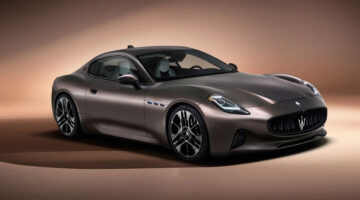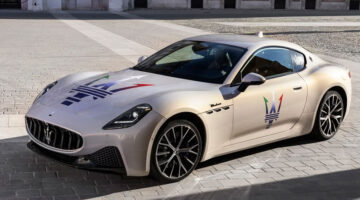The New Maserati Ghibli gets crankandpiston-ed in Siena, Italy.
[Not a valid template]
Ghibli
Definition: a hot, dry southerly wind of North Africa.
Origin: early 19th century: from Arabic qibl? ‘southern’
The Ghibli name has been attached to Maserati for almost half a century and carries with it a weight of sports car heritage. The original, Giorgetto Giugiaro-designed first generation Ghibli was the quintessential 1960s Italian muscle coupé: low and sleek with a monster quad-cam V8, producing power figures that would still be respectable today. It was the swan song of Maserati under Orsi ownership, which spanned back to 1937.
This was the heyday of Maserati, establishing the marque in our collective psyche as one of the true great Italian manufacturers. It was the era of five-time Formula 1 World Champion Juan-Manuel Fangio and a whole host of iconic cars from the 250F and Tipo 61 ‘Birdcage’ racers to the first generation Quattroporte.
The first generation Ghibli, released in 1967, was the most successful Maserati since the marque retired from factory racing in 1957, a response to the Guidizzolo tragedy during that year’s Mille Miglia. It outsold the competition from Ferrari (365 GTB/4) and Lamborghini (Miura) but it wasn’t enough to save Maserati from a Citroën takeover in 1968. And so followed the dark days of Maserati, the 1973 OAPEC oil embargo, the bankruptcy of Citroën and the eventual take over of Maserati by De Tomaso in 1975.
The De Tomaso period of Maserati control saw square-edged design reign supreme and sales success with both the third generation Quattroporte – infinitely more successful than the front-wheel drive, Citroën based second generation abortion – and the Biturbo, a two-door coupé that became the basis for the second generation Ghibli in 1992.
All the ingredients were there for a successful performance luxury coupé. With over 300hp from the (European only) 2.0-litre twin turbo V6, it was no slouch. But history was about to repeat itself. After only one year of production, Maserati once again changed hands to the Fiat Group – where it remains today – via a mildly complicated history of control including Fiat, Ferrari and a merger with Alfa Romeo under Fiat Auto.
Maserati are currently undergoing a renaissance and redefining the marque. A sizable financial injection, newly refurbished factory in Torino and ambitious plans to build 50,000 cars per year by 2015 began with the release of the sixth generation Quattroporte that we (kind of) had a drive in six months ago in Nice, France. The next model in the line-up is now here, and they have called it the Ghibli.
That is quite a long-winded bit of historical waffle but it brings us up to the present moment. I am in Siena in Italy and the new Ghibli is in front of me. It shares much of the same design language as the new Quattroporte, albeit in a slightly smaller package, and yet seems to gel better. The trademark mouth and gills look much more aggressive and shark-like, the rear haunches are muscular and it is a truly beautiful looking machine that deserves to wear the Trident. However, I am a bit confused.
CONTINUES ON NEXT PAGE



